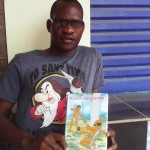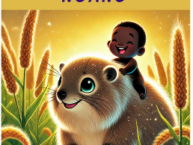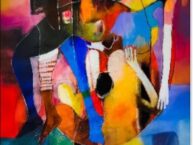
Kutyauripo, the Custodian of Shona Cultural Values
CHINUA Achebe writes in “African Writers Talking” (1972:7) that: “. . . what I think a novelist can teach is something very fundamental, namely to indicate to his readers, to put it crudely that we in Africa did not hear of culture for the first time from Europeans;” because we have always followed our own cultural way of life and worshipped God, the creator in our own way.
Artists as the custodians of the mores and values obtaining in their unique cultures should debunk the glorification of Western values and the demonisation of African belief systems. Chenjerai Hove points out in Palaver Finish (2002:57) that: “I always tell people that if they want to know about the history of a country, do not go to the history books, go to the fiction. Fiction is not fiction. It is the substance and heartbeat of a people’s life, here, now and in the past.” Suffice it to say that the best way of getting information on a people’s culture is a perusal of their literary texts; artists should rise to the occasion and fill in the yawning gap that historians leave in their quest to shape the future through the analysis of the past and its integration with the present.
Chinweuzu et al (1985) concur that the artist in the traditional milieu has always functioned as the custodian of the mores and values of his people. There is no better way of highlighting the African story than telling it in indigenous languages, which is the reason why Ngugi WaThiong’o has vowed to use Gikuyu as a vehicle to ferry his thematic concerns on the Kenyan experience. According to him the decolonization of Africa from the clutches of Western hegemony and stereotyping begins with the decolonisation of the mind; which is only possible through the shunning of Western languages in telling the African story. However, in a world where the reading culture is on the downward trajectory, publishing in indigenous languages might sound the death knell on reading per se, as the world has become a single village, some may argue.
It is worth noting though, that the preservation of culture begins with the preservation of language, which is its major informant. The death of language is the demise of culture and whatever it stands for, because African folklore, folk-song, proverbs and idioms which make up oral literature, heightens the understanding of the African’s world view. It is through these variables that African literacy may be discernible — the reading of the matrices that inform their world and not the Western idea of literacy-which calls for the deciphering of alien letters. In the Zimbabwean experience, books like Giles Kuimba’s “Tambaoga Mwanangu” (1968), Ignatius M. Zvarevashe’s “Gonawapotera” (1978) and Patrick Chakaipa’s “Karikoga Gumi Remiseve” (1958) play a significant role in the preservation of African religion and culture. The rising crop of Zimbabwean writers, with the exception of Memory Chirere who has been consistent in the use of both Shona and English in his work, is motivated by commercial gain at the expense of artistic value. Their preoccupation seem to be skewed in favour of the one who pays the piper, as opposed to the one whose story they purport to tell as is evident in the dubious awards they pursue.
In a society whose level of sophistication is measured by western knowledge acquired, foreign cultures presumed to be known and alien cities travelled to, Crymio Kutyauripo arrives on the literary platform with a gargantuan stride. His debut novel “Museve Usingapotse” (2014) compellingly captures the African story in an untainted way. Rarely do débutantes make such an impact that Kutyauripo has had at the Bookstore, and he can only do more. Told in the third person narrative technique, the book combines the macabre, sombre, gloomy and sordid with the glee, rapturous, tantalising and ennobling in such an adept way that leaves the reader aghast. His narrative skill, cultural depth, an infinite source of indigenous words, proverbs and idioms; descriptive prowess and attention to detail consumes the reader into the world of yore with such abandon that one might not want to be jogged into the present one of woes.
As a wordsmith, the artist uses powerful and original language which befits the setting that he uses; pre-colonial Zimbabwe. His subduing of the movement of the plot through fracturing it into different episodes which interact and merge into one discourse, creation of suspense sustained through the use of symbolical elements obtaining in the setting preferred and powerful descriptive language, makes the reading of the story not only captivating but didactic. Aptly playing his role as a custodian of the cultural mores and values of his people, Kutyauripo highlights the essence of culture in moulding the individual, and how African religion can be used in his/her redemption. He explores the rich African cultural landscape, untainted by foreign influence to demystify the cultural bankruptcy brought by colonialism. His world is a true African one whose hope is only manifest in its own sensibilities. The writer examines how African religion through the invocation of ancestral spirits has always been used to bring communion among the living and the dead. Traditional ceremonies like the burial of a chief, the rain-maker’s rituals as well as rites to bring the spirit of the dead to the fold play an integral part in establishing this fruitful communion.
Although Katyauripo’s offering can be read from a pre-colonial view point, the issues that pervade it are relevant in our world today. His exploration of the demonic, pervasive, brutal, corrupt and deceitful nature of power central to the story also focuses telescopic lenses on today’s power politics. The struggle for power which causes the assassination of Chief Chakaingeisu at the hands of his trusted nephew Pondai sets the train of events in motion, as his son Karinge seeks to avenge his death. After usurping power through the help of a neighbouring avaricious chief Mupambi, Pondai seeks to assassinate Karinge who escapes to Chief Tineshungu’s chiefdom. The heir apparent convinces the chief to help him in his quest. However, the chief though willing to help, has something else up his sleeve, as he seeks to settle old scores with Mupambi. Meanwhile, Chief Mupambi raids Chief Mushoshoma’s land and his land in turn is ambushed by Karinge and his forces. The heinous and brutal battles pitting the four chiefdoms establish Karinge as the victor through the support of his ancestral spirits. He subsequently installs his friends as chiefs in the conquered lands. However, although culture is a prerequisite in moulding the individual, it is sometimes oppressive and can be a damper on progress, and it is this that the writer is contemptuous of. The cruel and avaricious Chief Mupambi uses culture to justify his canal desires and to oppress his subjects. Women especially suffer the brunt of culture as they are mutilated and have their three front teeth knocked out once they get married. Soldiers are also branded like animals to separate them from enemies. Chief Tineshungu uses witchcraft to subdue his subjects; and as is the case in Chakaingesu’s land, albinos and twins are an abomination; hence they have to be killed at birth. The glorification of polygamy is also oppressive to women as they are used as pawns in the power struggles obtaining in these societies. Progressive societies borrow some good aspects of other cultures and merge them with their own because culture is not static but dynamic. On the other hand, although the protagonist wins back his inheritance and brings his sisters to safety, his installation of puppet chiefs in the conquered lands defeats the tenets of democracy and legitimacy which he purports to be championing, which may also cause problems in the future, as foretold by the oracle Matose. He is only 25 years old and his friends are just about that age, therefore this over-reliance on the ebullience and exuberance of youth is a bane on societal regeneration. They need the wisdom of age and experience and not spiritual guidance alone.
Notwithstanding the glitches associated with teething, Crymio Katyauripo’s “Museve Usingapotse” (2014) remains a shoulder above the rest in the new generation of Zimbabwean writers, as he establishes himself as a true custodian of the culture of his people.


